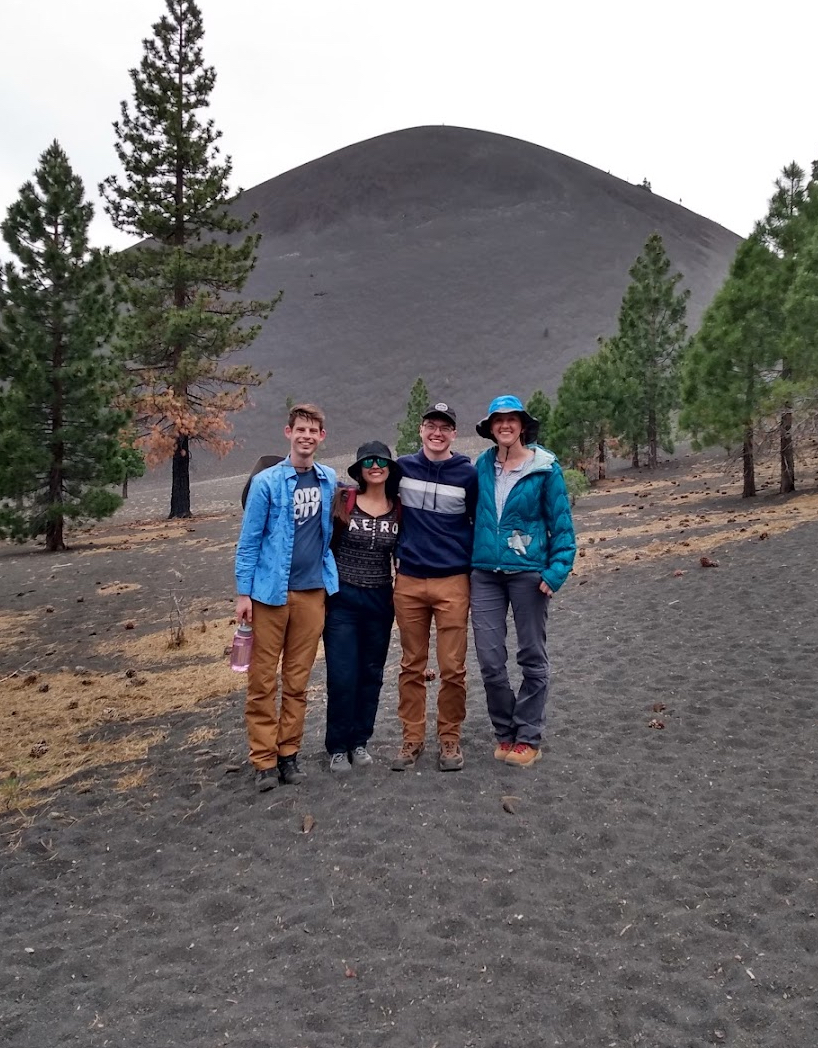UMD Geologist Megan Newcombe Receives National Science Foundation CAREER Award
The award will support Newcombe’s efforts to develop a new tool for understanding the underlying causes of volcanic eruptions
Megan Newcombe, a volcanologist and assistant professor of geology at the University of Maryland, received a Faculty Early Career Development (CAREER) award from the National Science Foundation (NSF) to develop a new way of understanding the processes that lead to volcanic eruptions. CAREER is the NSF’s most prestigious award for early-career faculty members who have demonstrated a dedication to research and education.

The five-year, $596,258 award will support Newcombe and UMD geology graduate students Kyle Kim, Sumedha Desikamani and Liam Peterson as they develop a “crystal clock” that will use geological clues stored inside crystals—taken from the ash of erupted volcanoes—to understand past eruptions, which will help scientists more accurately forecast future eruptions.
The award’s education and outreach component involves Newcombe and Terrapin Teachers teaming up with the Smithsonian National Museum of Natural History for a five-day summer program to teach high school students from Prince George’s County, Maryland, about volcanology.
“I am really grateful to NSF and my scientific community for supporting this project. I’m excited that this grant will help my students and me develop a useful new tool for volcanologists,” Newcombe said. “I’m also excited to meet some of our local high school students and introduce them to volcano science. I hope it might convince some of them to pursue careers in geology.”
Set to begin July 1, 2023, Newcombe’s research will analyze crystals left behind by the Mount Spurr eruptions of 1992. The Alaskan volcano is a unique case study because it erupted three times over the course of around three months, but the warning signs were different each time. By measuring the water concentration of these crystals, the researchers can learn about the movements of water-rich magma in the hours and days prior to eruption. This information will enable them to retroactively paint a picture of what triggered the seismic signals that preceded the three eruptions.

More generally, the researchers hope to create a crystal clock capable of determining where magma is stored in a volcano’s crust and how long it takes to reach the surface. This tool would have broad applications because the type of crystals that Newcombe’s team is studying—called feldspar—are extremely common.
“One of the special things about feldspar is that they crystallize in a broad range of magma compositions,” Newcombe said. “This means that we can apply this method to pretty much any volcano on Earth.”
Volcanic eruptions are difficult to predict. Current methods primarily rely on pattern recognition, which draws from past events to determine whether heightened activity is likely to result in an eruption at any given volcano. A crystal clock would complement this method by providing more details about the underlying mechanisms that trigger volcanic activity.
Newcombe has been interested in finding a more widely applicable method of studying the lead-up to volcanic eruptions since 2020, when she published a series of papers about the mineral olivine’s usefulness as a crystal clock. Because olivine is only present in a subset of magmas, it cannot be used to understand some of the more explosive eruptions, Newcombe said.
In addition to studying volcanic activity on Earth and other planets, members of Newcombe’s Planetary Volcanism Laboratory analyze volatiles found on the moon and other planetary bodies. Newcombe joined UMD in 2019 and earned her Ph.D. in geology from the California Institute of Technology in 2016.







